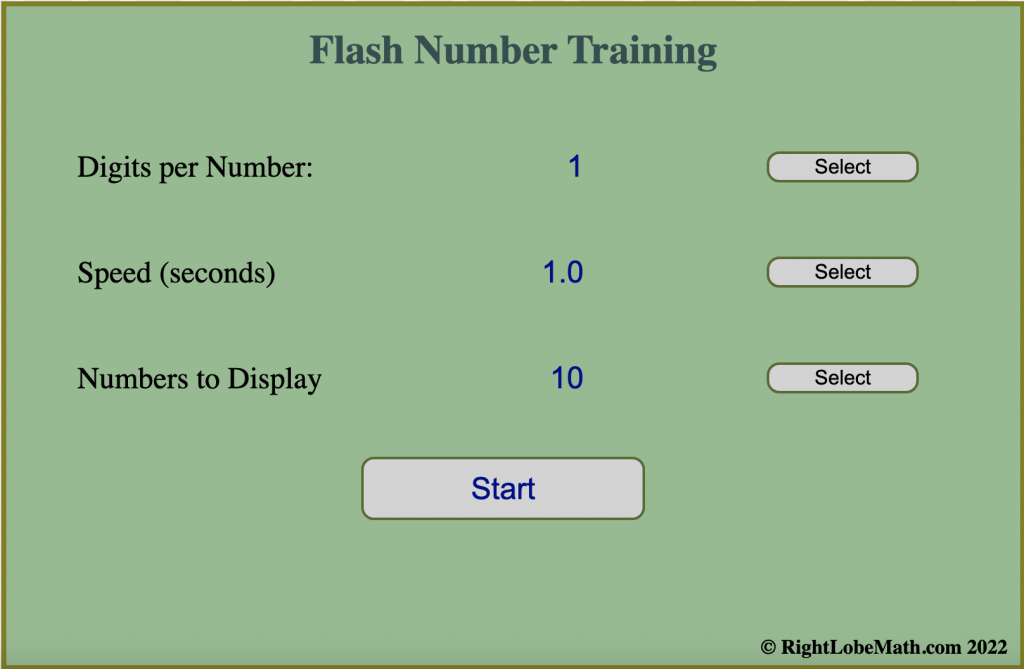What is Flash Anzan?
Flash anzan is the term to describe a very popular global mental math competition where contestants must add numbers shown consecutively on a screen within a specified time period. The current flash anzan world record is correctly adding 15, three digit numbers in 1.6s! This means each 3 digit number is displayed on the screen in just a little over 0.1s. Contestants must add each newly displayed 3 digit number in 1/10 of second. Most of us would be challenged just to see a single number they go bye so quickly.
Flash anzan competitors will often use a tool like the one shown here for daily practice. They set how many digits they want in each number, how many numbers to show sequentially, and how fast to show them.




How can they perform mental calculations so quickly? There are many different strategies that can be used for mental math. But the current world record holder and more than half of all flash anzan competitors visualize abacus bead movements in their head to do mental calculations. What does it mean to visualize abacus bead movements? These high level mental math competitors have spent years practicing moving abacus beads to solve arithmetic problems. As they work with the physical abacus moving the beads, their brain begins to visualize these same movements. Abacus users learn a small finite set of possible bead movements and are taught to not think logically about the calculations but to think mechanically only about the needed bead movements. This approach greatly reduces the amount of mental effort needed in doing arithmetic calculations. The magical part is they get mental math for free! Their brains will naturally develop mental images of these same movements and eventually they don’t need the physical abacus any longer. In fact, the reason they can do calculations with such speed is because they are manipulating images of the bead movements in their head, not logically calculating. Our brains can process images much faster that we can logically think about it. In a sense, they simply visualize a movie of changing bead images in their head. At the end of the problem their brain logically interprets the final bead image to understand the answer.
So can anyone learn to visualize abacus bead movements to perform mental math? The answer is absolutely yes! In fact, students that learn to do math on the abacus will automatically also learn to visualize the same movements. Although the abacus approach to teaching arithmetic is not well known in western countries, abacus based math instruction is wide spread in most of Asia. Anyone 3 years or older can learn to do math on the abacus. It is simple, fun, and very rewarding. With some consistent practice on a physical abacus, you will be doing flash anzan easily visualizing the bead movements. You will start slowly with single digit numbers. But with practice you will quickly build speed and take on larger sets of numbers.
Archives
Calendar
| M | T | W | T | F | S | S |
|---|---|---|---|---|---|---|
| 1 | 2 | 3 | 4 | 5 | 6 | 7 |
| 8 | 9 | 10 | 11 | 12 | 13 | 14 |
| 15 | 16 | 17 | 18 | 19 | 20 | 21 |
| 22 | 23 | 24 | 25 | 26 | 27 | 28 |
| 29 | 30 | 31 | ||||

Leave a Reply